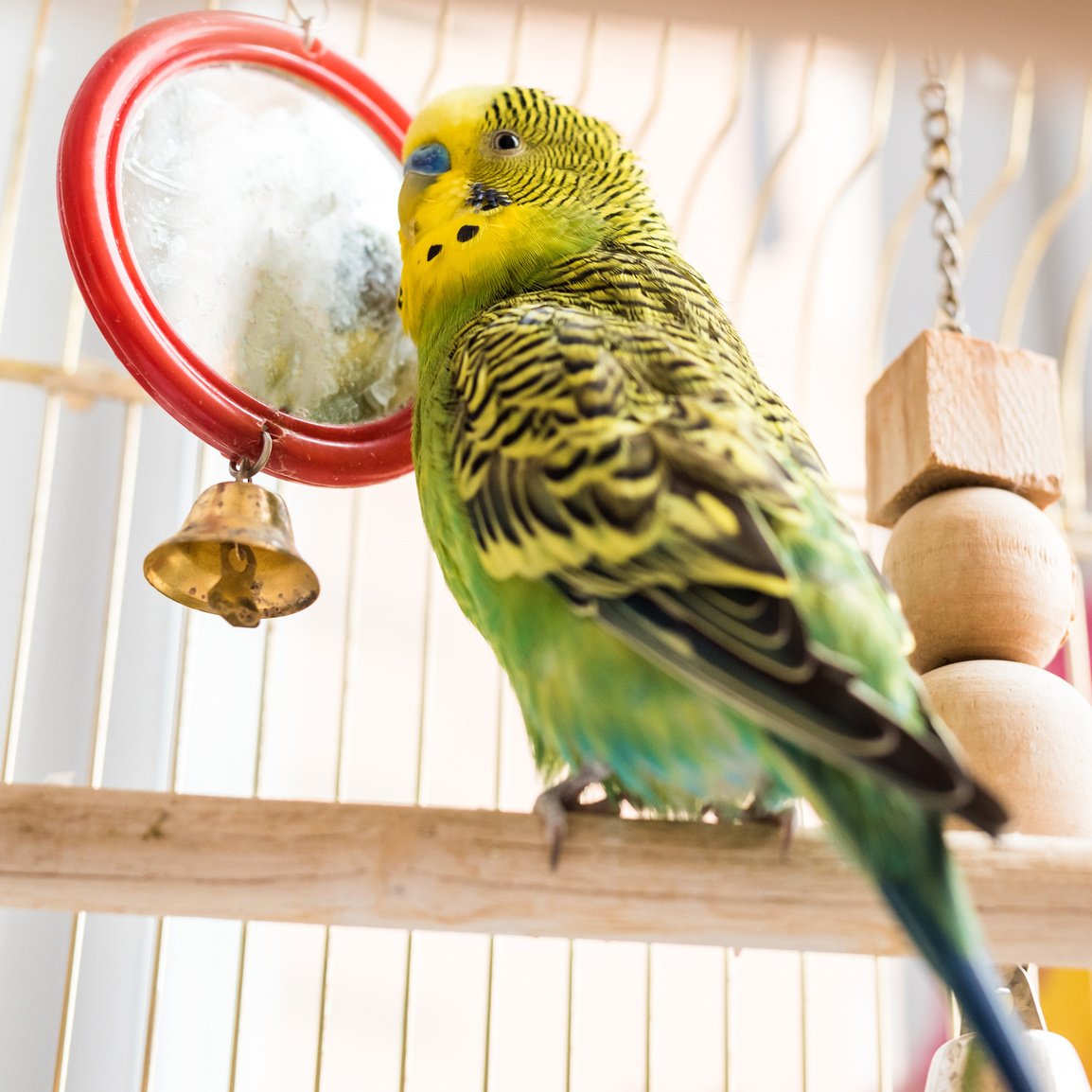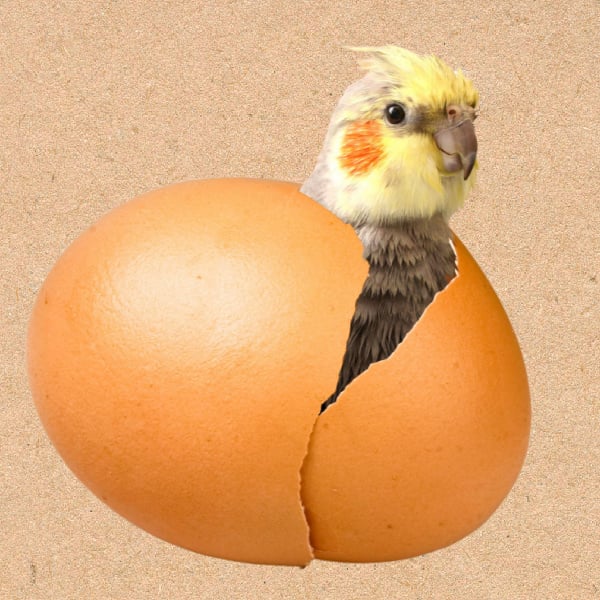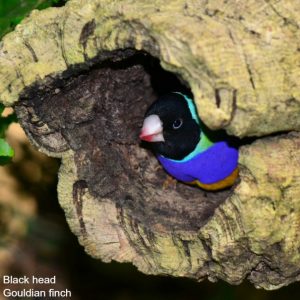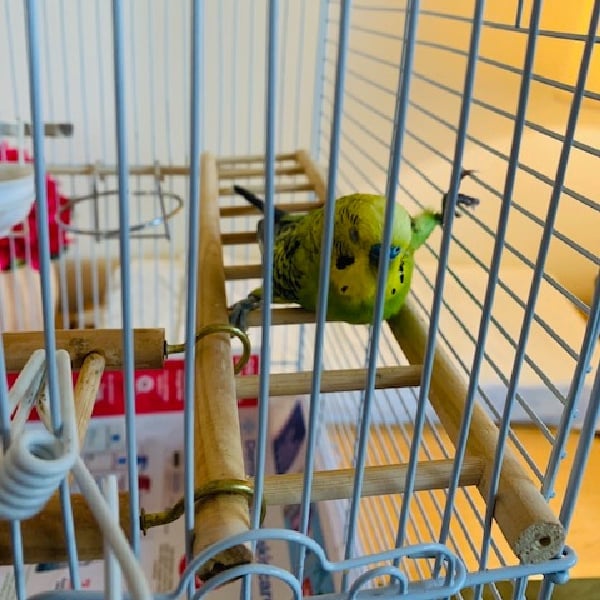
How To Introduce New Toys That Parrots Should Play With
Last Updated on by Mitch Rezman
And How to Discourage Items They Should Leave Alone
I had a screen saver a while back with an umbrella cockatoo and the words (from the cockatoo’s perspective), “What’s mine is mine, what’s yours is mine, if you put it down it is mine, if I see it it is mine, but if you give it to me, I don’t want it”.
This is so true for many parrots and can be used to introduce new toys and cage additions to your bird’s environment.
Some parrots are fearless and will immediately check out and accept just about any new toy or object unless it has realistic eyes or has a snake-like appearance, (snakes being major predators in the wild).
Other parrots are extremely shy and do not like change very much, even slow change.
And then there are parrots that fit every part of the spectrum in between.
One way to get your parrot to easily accept new toys and other changes easily is to regularly provide change to the environment.
The changes do not have to be huge; they can be as simple and small as reorganizing the existing toys in the cage.
While it is not practical or desirable to change things around on a daily basis when you feed and change cage liners, it is a good idea when doing your weekly thorough cage cleaning to move toys around (except the very, very favorite one), add some toys that have been removed for cleaning, remove a few that need cleaning or repair or add something new.
Anything that makes the parrot learn to expect and not resist change is good.
Avoid allowing the bird to get to the point that any toy movement causes the bird serious stress.
Slowly teach your bird that change is good because it ends with praise, love, treats and positive reactions to the bird accepting the new set up.
The next step in introducing a new toy is to play with the toy yourself first.
Show it to the parrot and then cuddle it, making a big deal about it with smiles, positive attitude, soothing loving talk, even pretend to place the toy in your mouth since birds use their beaks as a hand.
Show the parrot how the toy is to be played with. For example, if it is a foraging toy, open the secret compartment or drawer or wherever the treats will be hidden.
Place a treat in the toy and “find” it yourself, giving the treat to your bird.
Create as much drama about how great the toy is as possible without alarming the bird.
Birds love drama and react well to items that their humans are dramatic about.
Next, place the item the parrot should play with on top of the cage or on the play perch where the bird can check it out either close up or from a distance.
If the toy is large and very busy with parts and your bird is shy, it may take a few days or a week before it gets checked out. In the meantime, continue to touch the toy and repeatedly show the parrot it doesn’t hurt you in any way.
I had a case of this with Mango and his Small Preening Rope Swing for Smaller Birds.
The size was perfect for Mango or Kiwi to use.
It had lots of rope to chew on wrapped around the swing ring and at the bottom was colorful sisal preening fibers tied securely to the swing.
There was even a bell at the very bottom.
Mango looked at it in horror.
It was a bit too busy for a shy bird to take to immediately.
I went through the loving the toy process for a full week before placing it on top of the cage.
Once on the cage top, it took Mango days to check it out, but Kiwi helped because he is a tenacious little bird (meaning brave and won’t back down) and he groomed some sisal so finally Mango had to see what was up.
After a few days of that, I moved the swing into the cage into a space that would allow it to move freely.
Mango checked it out but wasn’t ready to enter the circle.
Kiwi was again the first to check it out and show Mango how to use it and that there was no threat.
Now Kiwi prefers to ring the bell while he grooms the sisal but has not yet entered the swing.
He will though. Had Kiwi not been around, I would have been responsible for teaching Mango how to use it and he will eventually probably find it is a favorite toy.
But he knows it is his and Kiwi’s to play with any time they choose.
They know from my teaching that it is a permitted toy and belongs to them.
Now, the opposite case can be a bit difficult.
We bird-proof our homes as much as possible, but there are still dangers.
Clicker training can be used to teach your parrot positive commands that allow them to get the idea where not to go.
For example, kitchens are dangerous, so if you teach your parrot a command of “go home” or “go to your house” when you get up to cook, they will learn that the area is off-limits.
Clicker training and positive commands rather than negative ones are the best training method.
“No” doesn’t elicit a positive response in most cases. I’ve always taught “go home” as a command that means I am doing something they can not participate in.
A new object in the house can really look interesting to a bird.
If your bird is flighted it can be difficult to place the object where the bird can’t access it.
You can use clicker training to teach the command “leave it” and offer a better place or toy for the bird to choose.
It takes dedication and repeated, consistent training using exactly the same command each time to teach any concept to your bird.
Just as you taught it to step up when asked (and hopefully to step down when asked), you have to teach it what is not a bird toy for it to play with.
If you don’t like the idea of a “leave it” command, consider using a “play at home” or “come here”, any command of your choice that will get your parrot to direct its attention elsewhere over and over until the item becomes of no interest.
When you are not around to supervise out-of-cage time, you should have your bird(s) securely locked in their homes (read cage if you prefer, but I don’t like that word much) so you will not come home to disasters and possibly dead birds.
Once out of the cage and spending quality time with you, know where your bird is and exactly what it is doing at all times so you can reinforce positive behavior with love, praise, and treats while discouraging negative behavior like chewing Auntie Jen’s antique heirlooms you inherited by using a command that positively directs the bird to toys and locations where it can play with its things.
Never try to discipline a bird by any type of hitting (clear bird abuse if you do that and you don’t deserve a bird), shouting, threats or dramatic responses because that will simply make the bird more interested in getting a dramatic response from you by repeating the bad action.
Birds simply love a good show of drama from their people and will be bad just to get the free show!
In the case of an item that could be poisonous to your bird, it must be placed in a bird-safe cabinet where the bird can not possibly get to it or in the garage or another storage area that is locked away from the bird.
A good metal storage cabinet like offices use is great for this purpose and fairly inexpensive to invest in compared to losing your precious feathered pal.
Introducing bird toys and teaching what is off-limits is part of the work of parrot parenthood.
If you are not willing to take on the responsibility of training your parrot on what is ok and what is off-limits, you should consider another type of pet.
Too many pets die each year by chewing on unsafe objects, getting into poison, getting into trouble in the kitchen, and any of the many other ways we kill or injure our birds.
Holiday decorations can be especially dangerous and when parties are being given, it is best to have the bird in a quiet room so no guest sits on the bird or feeds it unsafe food.
Always err on the part of caution. Teach your bird what is his and what is yours and reinforce this training with the strictest consistency.
Ghostwritten for Mitch Rezman
Approved by Catherine Tobsing
Author Profile
Latest entries
 The Traveling BirdJune 26, 2025Can You Name 5 Parrot Species That Are Living Wild in the USA?
The Traveling BirdJune 26, 2025Can You Name 5 Parrot Species That Are Living Wild in the USA? Bird BehaviorJune 26, 2025How is it Parrots Are Problem Solvers Social Animals and Even Use Tools?
Bird BehaviorJune 26, 2025How is it Parrots Are Problem Solvers Social Animals and Even Use Tools? Bird & Parrot AnatomyJune 25, 2025How a Tiny Chemical Modification Makes Parrots Nature’s Living Paintings
Bird & Parrot AnatomyJune 25, 2025How a Tiny Chemical Modification Makes Parrots Nature’s Living Paintings PigeonsJune 20, 2025How Do Parrots Thrive in Cities Outside Their Native Habitats?
PigeonsJune 20, 2025How Do Parrots Thrive in Cities Outside Their Native Habitats?



